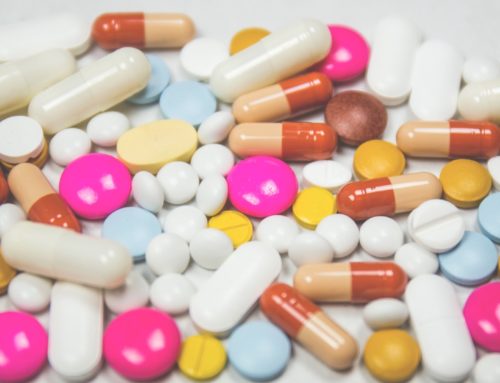Can you imagine if cupcakes were sold the same way as hamburgers? A dimly lit red velvet emerges from the flames of the oven, sparks flying in all directions, accompanied by an aggressively deep voice yelling something about BIG. MANLY. FLAVOUR. Buttercream frosting can be seen oozing down onto the breasts of a 20-something year old in a bikini as she drapes herself across a neon sports car.
It’s a ridiculous thought. Yet, nobody tends to question how insanely weird it is for the meat industry to market their products in this way. I mean, you’d be hard pressed to come up with any other type of food that is gendered to this extreme. How absurd to think of eating french fries as being feminine, or that liking croissants meant you lacked the personal quality of toughness.
This article will examine the reasons behind this bizarre gender-targeted marketing ploy, as well as discuss the ways in which the meat industry continues to perpetuate myths associated with meat consumption, toxic masculinity, and manliness, in order to directly profit from the exploitation of male insecurities within society.
…And if that wasn’t bad enough, it’s also killing you guys.
Preventable Diseases Associated with Meat Intake
Not only are red and processed meats classified as a Group A carcinogen — meaning they are definitively proven to cause cancer in humans — but, diets high in meat consumption have been conclusively, and consistently, linked to life-threatening diseases such as coronary heart disease (CHD), type 2 diabetes, and multiple types of cancer, including prostate, stomach, pancreatic, colon, esophagus, liver, and lung (1,2).
What’s more is that a 2015 U.S. National Health and Nutrition Examination Survey found that men consume a whopping 57% more meat, on average, than women (3). With these statistics in mind, it makes sense that men, as a whole, are over 50% more likelyto die of coronary heart disease than women, even though CHD is the number one killer across all genders. Bear in mind that these results were obtained even after accounting for factors such as high cholesterol, high blood pressure, diabetes, body mass index (BMI), and physical activity (4).
Perhaps even more concerning, is the fact that autopsy studies reveal about half of all men over the age of 80 are found to have undiagnosed prostate cancer (5). This information suggests that the formation of these cancerous tumors would have begun much earlier, while they were in their 50’s, 60’s and 70’s. While these men, in particular, might not have died from their cancer, in the year 2018, alone, over 358,989 men worldwide did (6).
Interestingly enough, it wasn’t until 2016, that the United States Department of Agriculture (USDA) first began to warn against excessive meat consumption, with a recommendation, that, “some individuals, especially teen boys and adult men…reduce their overall intake of protein foods by decreasing intakes of meats, poultry, and eggs and increasing amounts of vegetables or other under-consumed food groups” (7).
Fascinatingly, not many people realize that cholesterol (aside from what our bodies naturally produce and use) is exclusivelyfound in animal products. Yep, you heard that right — even the sweetest, most indulgent three-layer chocolate cake will not contain cholesterol if you remove the milk, butter, and eggs. Likewise, the biggest, most processed veggie burger in the world (with side of fries, of course) will be cholesterol-free if it contains no meat, egg, or dairy.
To recap: A plant-based, and animal-free diet = an inherently cholesterol-free diet. For obvious reasons, this can dramatically lower the average person’s risk of heart attack and stroke.
Despite the wealth of evidence supporting the notion that a diet high in animal products leads to a range of diet-related diseases and deaths, many men are vehemently against the idea of cutting down on their meat intake…
Let’s talk about why that is, exactly.
Advertising Masculinity
Animal products, and more specifically, the meat industry, have been specifically targeting the male demographic for decades. This targeting occurs through a combination of subtle, and not-so-subtle, advertising strategies that rely primarily on sex and toxic masculinity to turn a profit.
Think of any fast food ad you like. Carl’s Jr. is known for it’s iconic and unapologetically sexist advertisements that often showcase their hamburgers alongside half-naked supermodels such as Charlotte McKinney (Super Bowl XLIX 2015 ad). Meanwhile, McDonalds is equally famous for its celebrity fast food campaigns that regularly feature pro-athletes and sportsmen such as LeBron James and Michael Jordan… I mean, as if these athletes are actually eating McDonalds twice a day.
When women are featured in meat advertisements, it is common to see them portrayed as mere objects of their sexuality, or in roles that strongly adhere to gender norms. Women are often portrayed as being responsible for the buying and preparing of meat, while men just get to enjoy the eating.
Though my red velvet cupcake comparison was obviously written to be satirical — I promise you — it’s not that far off. Once the penny drops, it becomes easyto see exactly how the marketing industry reinforces the idea that eating meat is essential to masculinity: By perpetuating toxic stereotypes through the use of imagery, allusion, and appeal to sex, the meat industry gets to profit from the direct exploitation of male insecurity via highly targeted fast food ad campaigns.
This undeniably clever strategy of advertising ensures that not only is eating meat viewed as an intrinsic symbol of masculine validity and capability, but that the act of not eating meat, is actively associated with qualities such as inferiority, and being weak or effeminate…
Bear in mind, that all this continues to take place whilst rates and risks of preventable disease sky-rocket among the exact same populations. If you were to ask me, there’s nothing weak about avoiding a premature, and potentially fatal heart attack… but maybe I’m just biased.
Subsidies and Government Involvement
Wait — speaking of bias — let’s examine the ways in which the government is involved in the production and promotion of meat. Actually, first come to terms with the fact that you’ve never seen an advertisement for a fruit or a vegetable, this is simply because there’s no money in promoting health. You know those ‘got milk’ campaigns? Ask yourself why there’s never been a ‘got celery juice?’ or ‘got cauliflower’? version. You’ll find the answer comes down to money.
In accordance with recent studies, the American governement spends around $38 billion each year to subsidize the meat and dairy industries. Shockingly, less than 1% of all agricultural subsidy money goes towards supporting the production of fresh fruits and vegetables (7).
But, what exactly is a subsidy?
A subsidy is a form of financial aid (in this case, one paid for by U.S. tax payers) from the government that provides support to a particular sector. In the case of agricultural subsidies, most of the money is given to livestock farmers, as well as farmers responsible for growing the crops that feed livestock, such as GMO corn, soybeans, rice, and wheat. Naturally, the greater the ties between the crop producing farmers to the world’s largest meat and dairy corporations, and thus, the factory farming industry, the greater the allocation of federal funds.
These subsidy programs allow farmers to make money, even when fluctuations in consumer spending occur, and people are buying less. Farmers often have millions of dollars in revenue subsidized, so they are able to maintain their production by way of what is essentially the upholding of a false economy. Additional expenses, such as insurance, product marketing, export costs, and development research are also typically paid for with tax-payer money (8).
Author of the book, ‘Meatonomics,’ David Simon, states,
“Both in the US and Australia, our federal governments are engaged in a campaign to support industry and bombard us with messages to get us to consume more meat, eggs and dairy.”
“We can say without controversy or doubt that when a checkoff program speaks in the US — when it says drink more milk, eat more beef — that is the federal government of our country telling consumers to eat more animal foods.”
What this means is that consumers are able to buy cheap meat, fast food, and dairy products, at a fractionof the real cost of production. Simon estimates that for every $1 of meat and dairy that the agricultural industry sells, consumers are footing an additional estimated $2 (9).
Understand that these costs do not even begin to cover the American expenditure on meat consumption that occurs as a result of subsequent healthcare costs, and environmental damage (think water usage, food destruction, methane and CO2 pollution, animal waste run-off, etc).
Myths About Meats
Despite all the evidence pointing toward some less than desirable consequences of meat consumption — both physically, and financially, — culture strongly upholds the toxic notion that eating animals is tied to masculinity, and is therefore necessary, hell, even beneficial. In large part, this results from the fact that society continue to perpetuate a range of myths pertaining to meat consumption that almost guarantee the average consumer to blissfully remain none-the-wiser about their eating habits.
Here are some commonly purported myths you may have come across before:
1.‘It’s impossible to get enough protein without eating meat’
The fear and consequential myth of inadequate protein intake stems from a lack of general information on where protein comes from. Far too many people are shocked to find out that vegetables contain protein, and that many plant-based meat replacements, such as seitan, tempeh or tofu, contain extremely high levels of it.
Research has shown that at least 14% of the total calories of every plant are protein, and that, per calorie, broccoli contains more protein than steak, with the protein in spinach roughly equating to that of chicken or fish (10). As a result of individuals on a plant-based diet needing higher quantities of food to match the caloric intake of a standard diet containing meat, eggs and dairy, it is almost impossible to not surpass the recommended levels of protein, even when completely exclusing meat and other animal products.
Compare the number of individuals in hospital for coronary heart disease, with those in the hospital for protein deficiency… It’s no surprise that you might return empty handed searching for the latter.
2.Not eating meat will lead to nutritional deficiencies
There is the common idea that a meat-less diet is definitely going to be missing necessary nutrients, and this is, fortunately, simply not true. B12, also known as cobalamin, is a vitamin responsible for cell metabolism. It’s often cited as one of the justifications for eating meat, as the consequences of not consuming enough B12 can be very serious.
What is lesser known, however, is that 90% of B12 supplements worldwide are fed to animals raised for food. A thousand years ago, humans could obtain B12 through eating vegetables as it occurred naturally in the soil. As a result of modern day sanitization processes, we no longer have sufficient levels of B12 in our farming soil, and thus even the animals we eat are given dietary supplements for the vitamin (11).
In fact, studies have found that plant-based eaters actually have lower rates of B12 deficiency than individuals on any other diet (12). This is likely a result of paying increased attention to the nutrients they are consuming day to day.
Let it be known that there is nothing in a standard Western diet that you can’t get in a whole-foods plant-based one — other than cholesterol, heterocyclic amines, E. coli, etc… but that’s another topic in and of itself.
3.‘Eating too much soy will give you boobs’
Soybeans and soy derivatives, such as edamame, tofu, tempeh, soy milk and miso, are all primary sources of protein and nutrients for individuals eating plant-based, or sans meat diets,as well as being common staples within many traditional cuisines. All of these foods naturally contain a type of plant compound known as phytoestrogen, and as a result of the name similarity, people often assume that phytoestrogen must have the same impact on the body as the hormonal estrogen that is produced by humans and other mammals. Common myths related to soy claim that increased consumption can harm thyroid function, promote cancer growth, and even feminize men.
This is not actually the case, at all. Phytoestrogen or “plant estrogen” actually has the unique ability to bind to estrogen receptors, and once attached, phytoestrogen has been shown to actually lower the risk of breast and prostate cancer, by blocking the receptor’s access to true estrogen (as the phytoestrogen is already in it’s place) (13). In a sense, soy foods act as the best of both worlds, providing an array of key nutrients in addition to inhibiting the potential consequences of other lifestyle factors. In fact, science is still deciphering exactly how positive the effects of phytoestrogen can be.
On the other hand, this helps to illustrate why exactly dairy milk consumption has been linked to the increase in risk of disease. In the same way that humans only produce milk when they are breastfeeding, cows also only produce milk for their young. Within the dairy industry, cows are repeatedly impregnated in order to maintain milk production, however this means that all milk contains high levels of the hormones associated with pregnancy in mammals — most abundantly estrogen and progesterone (14). These hormones can depend drastically on the specific type of dairy consumed; for example, estrogen is five times more concentrated in cream and cheese, and nearly ten times more concentrated in butter. These are not false, plant-forms of the hormones, but mammalian version that directly impact human health, especially in regard to cancer risk (15).
Sorry to disappoint, men, but soy will not give you boobs. Your testosterone is safe with soy.
Keep in mind that these falsehoods and myths are not accidental consequences of a lack of information, rather they are attempts on behalf of organizations with vested interests in the meat and advertising industries to sway public opinion (and dollars) in their favour.
Being forced to contend with manipulative marketing schemes, misleading ‘research’ and advertisements, as well as culturally upheld notions of what it means to be a man, it is absolutely no wonder why so many men are hesitant to take the animal off of their plates.
At least now you know.
In-Text References:
- Zheng Yan, Li Yanping, Satija Ambika, Pan An, Sotos-Prieto Mercedes, Rimm Eric et al. Association of changes in red meat consumption with total and cause specific mortality among US women and men: two prospective cohort studiesBMJ 2019; 365 :l2110)
- Albrektsen G, Heuch I, Løchen M, et al. Lifelong Gender Gap in Risk of Incident Myocardial Infarction: The Tromsø Study. JAMA Intern Med.2016;176(11):1673–1679. doi:10.1001/jamainternmed.2016.5451
- What We Eat in America, NHANES 2007–2010 for average intakes by age-sex group (graphic chart)
- Rawla P. (2019). Epidemiology of Prostate Cancer. World journal of oncology, 10(2), 63–89. https://doi.org/10.14740/wjon1191
- Bell, K. J., Del Mar, C., Wright, G., Dickinson, J., & Glasziou, P. (2015). Prevalence of incidental prostate cancer: A systematic review of autopsy studies. International journal of cancer, 137(7), 1749–1757. https://doi.org/10.1002/ijc.29538
- U.S. Department of Health and Human Services and U.S. Department of Agriculture. 2015–2020 Dietary Guidelines for Americans. 8th Edition. December 2015
- David Robinson Simon, Meatonomics. Berkeley, California. Conari Press, 2013.
- Database, EWG’s Farm Subsidy. n.d. “EWG’s Farm Subsidy Database.” Accessed November 4, 2019. http://farm.ewg.org/region.php?fips=00000&statename=UnitedStates.
- David Robinson Simon, Meatonomics. Berkeley, California. Conari Press, 2013.
- Stoll, S. (2013). Whole Foods UK. [online] Department of Physical Medicine and Rehabilitation. Available at: yes-plants-have-protein [Accessed 19 Dec. 2019].
- United States Dept. Agriculture (2019). USDA ARS Online Magazine Vol. 48, №8. [online] Available at: https://agresearchmag.ars.usda.gov/2000/aug/vita[Accessed 2 Dec. 2019].
- Damayanti, D., Jaceldo-Siegl, K., Beeson, W. L., Fraser, G., Oda, K., & Haddad, E. H. (2018). Foods and Supplements Associated with Vitamin B12Biomarkers among Vegetarian and Non-Vegetarian Participants of the Adventist Health Study-2 (AHS-2) Calibration Study. Nutrients, 10(6), 722. doi:10.3390/nu10060722
- Guha N, Kwan ML, Quesenberry CP Jr, Weltzien EK, Castillo AL, Caan BJ. Soy isoflavones and risk of cancer recurrence in a cohort of breast cancer survivors: the Life After Cancer Epidemiology study. Breast Cancer Res Treat. 2009 Nov;118(2):395-405.
- Malekinejad H, Rezabakhsh A. Hormones in Dairy Foods and Their Impact on Public Health — A Narrative Review Article. Iran J Public Health. 2015;44(6):742–58.
- Nachman KE, Smith TJ. Hormone Use in Food Animal Production: Assessing Potential Dietary Exposures and Breast Cancer Risk. Curr Environ Health Rep. 2015;2(1):1–14.





